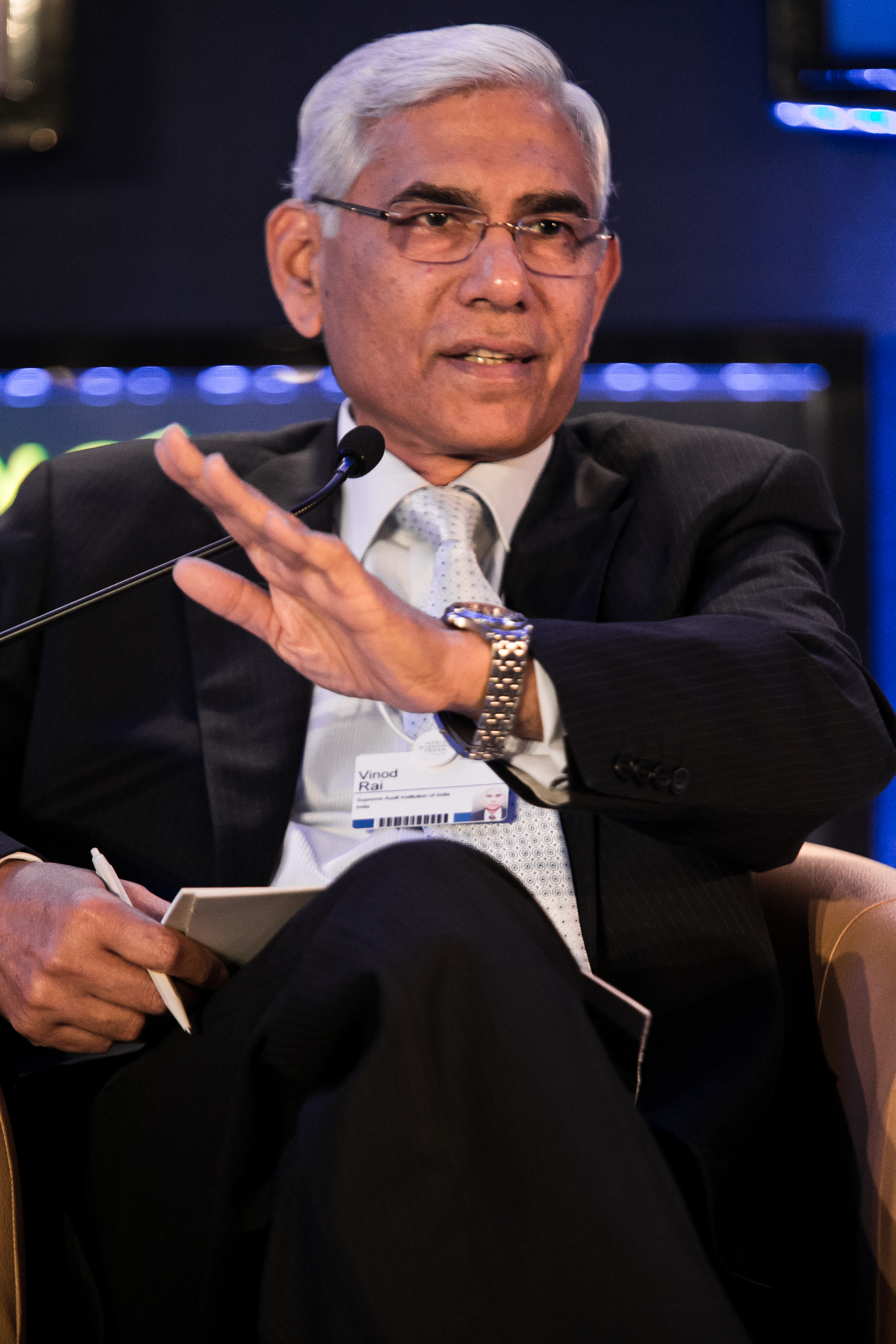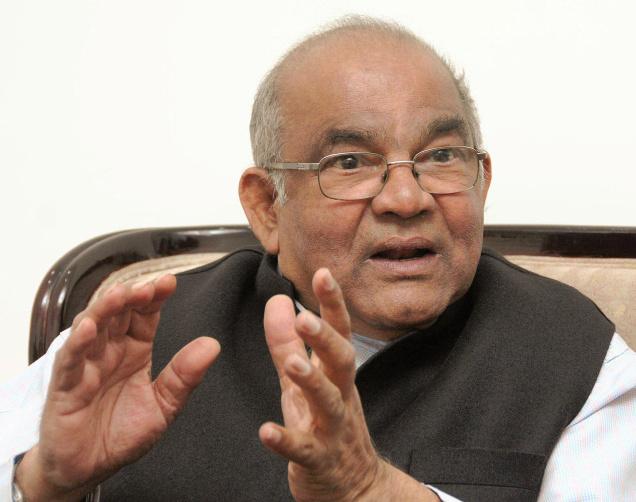 Lawyers who become politicians are very good at giving things a good spin.
Lawyers who become politicians are very good at giving things a good spin.
The Congress led United Progressive Alliance(UPA) was full of such individuals, who could provide a good spin 24/7 to various things that were going wrong during the regime.
The biggest spin came when the Comptroller and Auditor General(CAG) Vinod Rai exposed the coalgate scam and estimated that the losses to the nation were around Rs 1,86,000 crore. (You can read how the number was arrived at here).
Various Congress politicians worked overtime to suggest that there were no losses. The then finance minister P. Chidambaram had said: “If coal is not mined, where is the loss? The loss will only occur if coal is sold at a certain price or undervalued.” Other leaders suggested that the CAG Rai(who former bureaucrat turned politician N.K.Singh labelled as the bhumihar from Ghazipur) had political ambitions.
Manish Tewari, the Congress leader who during his heydays could have an opinion on anything and everything, had said: “R-virus has infected the Indian growth story. The R-virus stands for a phenomenon were responsible individuals decide to become loose cannons.”
On another occasion, Tewari had commented that: “When individuals decide to go rogue, institutions suffer. That possibly has the most detrimental effect on the India growth story.” Montek Singh Ahluwalia, the former deputy chairman of the now defunct Planning Commission, had claimed that “untrained staff [is] auditing CAG reports.”
Long story short—the official propaganda machinery worked overtime to discredit Rai. They told us time and again that giving away coal free was not leading to any losses. Even without getting into any technicalities, how can giving away something ‘free’ not lead to losses is not something that any of these politicians bothered to explain.
In the early 1990s, the government realized that enough coal was not being produced to meet the demand. Hence, it decided to amend the the Coal Mines(Nationalisation) Act with effect from June 9, 1993. This was done largely on account of the inability of Coal India Ltd (CIL), which produces most of India’s coal, to produce enough coal.
The idea, as the Economic Survey of 1994-1995 pointed out, was to “encourage private sector investment in the coal sector, the Coal Mines (Nationalisation) Act, 1973, was amended with effect from June 9, 1993, for operation of captive coal mines by companies engaged in the production of iron and steel, power generation and washing of coal in the private sector.”
The amendment allowed companies which were in the business of producing power and iron and steel, to own coal mines for their captive use. Any excess coal that was produced had to handed over to the local subsidiary of CIL.
Using this amendment, the government gave away 204 coal blocks for free over nearly two decades. Most of these free coal blocks were given away between 2004 and 2011, when the Congress led UPA was in power (and that explains why the businessman turned Congress politician Naveen Jindal was the biggest beneficiary with nine coal blocks allotted to him). Nevertheless even by 2011-2012, these coal blocks produced only 36.9 million tonnes of coal. This amounted to around 6.8% of the total production of 539.94 million tonnes during the course of that year.
In August 2014, the Supreme Court cancelled the allocation of these blocks. The Screening Committee method used to allot blocks was not up to the mark, it suggested in the judgement. The coal blocks were allocated based on the recommendations of an inter ministerial screening committee.
As Rai writes in Not Just an Accountant—The Diary of the Nation’s Conscience Keeper “This committee was to scrutinize applications for captive mining and allocate coal blocks for development, subject to statutes governing coal mining, following which the coal minister would approve the allotment…The screening committee is expected to asses applications based on parameters such as the techno-economic feasibility of the end-use project, status of preparedness to set up the end-use project, past track record in executing projects, financial and technical capabilities of applicant companies and the recommendations of the concerned state governments and ministries.”
The Supreme Court judgement dated August 25, 2014, did not find this approach up to the mark. It pointed out that: “the entire exercise of allocation through Screening Committee route thus appears to suffer from the vice of arbitrariness and not following any objective criteria in determining as to who is to be selected or who is not to be selected.” The judgement further pointed out that “there is no evaluation of merit and no inter se comparison of the applicants.”
After the cancellation, the government decided to auction the coal mines. Over the last few days the government has been auctioning the first lot of these coal blocks. Fourteen out of the 19 blocks that are on auction have been sold till now, for a whopping Rs 80,000 crore.
What this clearly shows is that Vinod Rai was right about the losses all along. And it wasn’t just about the money. Here are seven reasons that justify that:
a) All the zero loss theories offered by the various Congress politicians were bogus. The government has already earned close to Rs 80,000 crore, which will be paid by winning companies over the years.
It needs to be mentioned that more than 200 coal blocks will be eventually auctioned. Imagine the kind of money we are talking about here. A report in the Business Line points out that “according to government estimates, from the entire 204 blocks to be allocated/auctioned in phases, over Rs 15-lakh crore was expected to be garnered over the lifetime of the mines.” “But now we see this number could be higher,” a Coal Ministry official told the newspaper.
Interestingly, the CAG had said in its report that: “A part of this financial gain could have been tapped by the government by taking timely decision on competitive bidding for allocation of coal blocks.”
b) Vinod Rai and the loss estimate of Rs 1.86 lakh crore made by the CAG, was very conservative at best. But accountants are expected to be conservative. The CAG worked with fairly conservative estimates on this front as well.
Typically extractable reserves are around 80-95% of the geological reserves of coal. The portion of the geological reserves that can be extracted are referred to as extractable reserves. As Rai writes in his book: “Audit based its computation on [the] conservative estimate of 73 million tonnes for every 100 million tonnes given in the GR [geological reserve]…Can audit be faulted if its computation was based on a conservative estimate of 73 per cent?…The extractable reserves…based on the aforementioned method, was found by the CAG to be 6282.5 million tonnes, which is mentioned in the report.”
Hence, only 6.28 billion tonnes of the 44.8 billion tonnes of geological reserves was assumed as extractable reserves while calculating the losses of the government. You can’t hold that against Rai. c) The ‘auction’ is a very clean way of doing things unlike the ‘behind the doors’ screening committee method. Further, there was no ‘fair’ way of going about allocation of coal blocks through the screening committee method. It went against the basic principle of equity.
Former coal secretary P C Parakh explains this in Crusader or Conspirator—Coalgate and Other Truths: “By the time I took charge of the ministry, the number of applicants for each block had increased considerably although still in single digits. I found a number of applicants fulfilling the criteria specified for allocation of each block on offer. This made objective selection extremely difficult.”
In fact in the years to come the situation became significantly worse. As Parakh writes: “According to CAG’s report, 108 applications were received for Rampia and Dip Side of Rampia Block [names of two coal blocks]. I found it difficult to make an objective selection when the number of applicants was in single digits. How could the Screening Committee take objective decisions when the number of applicants per block had run into three digits?”
Allocating blocks through an auction takes care of such issues.
d) By attaching a certain price to the coal block the government should be able to keep the non-serious players out. Take the case of the Rampia coal block mentioned earlier, where 108 applications were received. When something is available for free everybody wants it.
e) Also, once companies have to pay for a block, the chances are that they will try and ensure that they start producing coal as soon as possible. This was something that was not happening earlier. As per the 11th five year plan, which started in 2007-08, the production from the captive coal blocks was to expected to touch 111 million tonnes of coal per year by 2011-12. The captive coal blocks produced 36.2 million tonnes of coal during the course of that year. By 2016-17, the production of coal from these blocks was expected to touch 330 million tonnes. In 2013-2014, these blocks produced only 39 million tonnes. What this tells us is that many non-serious players had got the blocks as well.
f) Indian businesses have for too long been used to getting things for free, including coal. This has led to the misconception that thermal power is cheap, which is not. Once, the right price of coal is taken into account, other forms of generating electricity might start to look viable. And that will be good for the environment.
g) And finally, transparency is very essential whenever the government is selling a public asset. It goes a long way in controlling crony capitalism. Coal auctions are worth all the trouble just for this one reason.
The column originally appeared on www.firstpost.com on Feb 20, 2015
(Vivek Kaul is the author of the Easy Money trilogy. He tweets @kaul_vivek)



